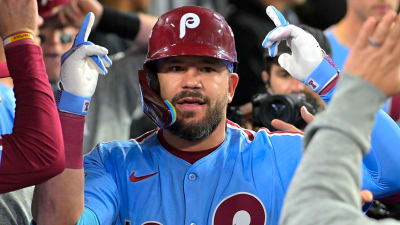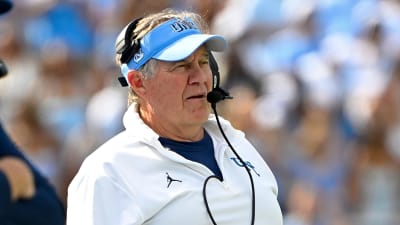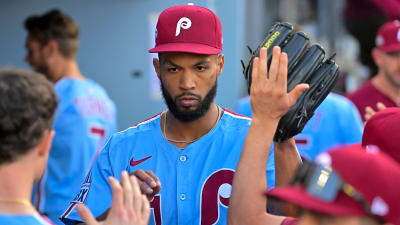I am quizzing Eric Billimoria on the first floor of the iconic Parsi Gymkhana. Perpendicularly to my right, the announcement speaker bolted to the thick, diagonal wooden beams above us has caught rust, its hue approximating the mud brown of the pitch square as the oft-romanticized Mumbai rain descends leisurely on the roofs of the kaali-peeli taxis zooming on Marine Drive. Behind my interviewee, the joint secretary of the 140-year-old club, I can see through a translucent window four elderly gentlemen playing a game of poker in the cards room. Adjacent to the bustling train station is the wide netting facility, occupied by a group of boys surveying whether the conditions are fit for recreational cricket. The tennis ball isn’t bouncing off the damp turf, they find out. A teenager wearing an orange t-shirt is particularly chuffed by the discovery, and kicks down the plastic stumps with a football. How apposite to the matter at hand, I whisper under my breath. The venerated land that was once the minting block of Indian cricket now yearns for the presence of Parsis lending themselves to the sport.
‘’It is sad,’’ Eric says of the community’s intense withdrawal. ‘’We did a data analysis and it was found that of all the schools that play cricket in Mumbai, there’s not a single Parsi boy who is playing cricket.’’ His colleague, Khodadad Yazdegardi, Vice President for two decades now, reminisces the heyday when the Parsi Gymkhana team, which partakes in the A division of Kanga League, used to be true to its name. ‘’When I played between 1984 to 1993, we were a full Parsi team. Not only eleven on the field but six, seven extras also. A squad of 20 was made up of Parsis, but the fall started in 1994 and gradually our bidding just went off. We’ve got Suryakumar Yadav and around a dozen Ranji Trophy cricketers playing for us but none of them are Parsis,’’ he laments in the documentary Four On Eleven, the title suggestive of the dense representation the Parsis managed to accomplish in the Indian team on the 1961-62 tour of West Indies.
They were the face of an independent India, no longer grasped by the tentacles of colonial oppression. Battling a cracked rib, Nari Contractor faced the thunderbolts of Freddy Trueman and Billie Statham and went on to score 81 runs at Lord’s. Under his leadership, India blanked Ted Dexter’s England side 2-0 in a five-match series. Rusi Framroze Surti, a left-handed all-rounder who was electric in the field, had the gall and gumption to return the favour to the browbeaters employing sledging as a tactic to gain a psychological edge. Polly Umrigar beat allegations around his inability to handle pace with an undefeated 172 against the dreaded Caribbean attack on one of the fastest pitches of the world, Sabina Park. While Dianna Edulji participated in three World Cups and fetched the record for delivering the most balls in Women’s Test history in her career spanning till 1993, Farokh Engineer was the last male Parsi cricketer to have played for India, in 1975. ‘’I’m sick and tired of hearing that from people that after you why hasn’t any Parsi come up on the scene,’’ he frets.
Noshir Mehta, a lithe off-spinner hailing from Hyderabad staked his claim for India selection for the England and West Indies tours in early 1970s despite stiff competition from virtuosos Erapalli Prasanna and Srinivas Venkataraghavan in the South Zone. On a featherbed in Madras, he conceded 16 runs in 26 overs and picked up six wickets to bowl Hyderabad to an outright win against Tamil Nadu. “I dismissed Sunil Gavaskar thrice in the four matches I played against him, caught twice at short mid-wicket and clean bowled on one occasion as I beat his defence, getting the ball to drift away past the outside edge,’’ Noshir draws from his razor-sharp memory. Zubin Bharucha showed promise as an opener before pivoting to coaching. Aged 22, he hit a hundred on Ranji Trophy debut for Mumbai against Baroda in 1992. Two years later, he produced an Irani Cup ton to cement his case, but inclusion in the India Youth XI is the closest he could get to a national call-up.
Now the ray of hope is Arzan Nagwaswalla, who was named a standby for India’s trip to the United Kingdom for the World Test Championship final and the subsequent Test series against England in 2021. He grew up in Nargol, a stone’s throw away from the beach, and remains obsessed with catching sunsets, a habit that feels calming and therapeutic to the left-arm seamer given the performance pressure athletes deal with on a daily basis. ‘’It helps me stay grounded. You just focus on watching the sun go down, down, down and disappear into the ocean.’’ Arzan offers philosophically. The irony is that, as things stand, he is the lone ranger keeping the sun from setting on Parsi cricket.
An uncommon hyperextension injury to the elbow of his bowling arm at the very beginning of the 2022-23 Ranji Trophy saw him lose the snap at the point of release that imparted extra backspin on the ball, however post surgery and six-month long rehab which he describes as a ‘stressful time’ Arzan has not only rediscovered his natural inswing but also retained his deceptive bouncer. When summoned to travel as a net bowler with India, his first-class career was nascent – 62 wickets at an average of 22.5 and a strike rate of 44.6, impressive numbers for a first-change bowler. Roosh Kalaria’s retirement brought more responsibility on his shoulders, and Arzan seems to be navigating the transition well. Chintan Gaja and him spearheaded Gujarat’s campaign in the latest Vijay Hazare Trophy, finishing with 16 wickets apiece in 8 innings. He has claimed three wicket hauls in his last two Ranji Trophy matches, working over Sachin Baby and Jalaj Saxena to thwart Kerala’s blossoming partnerships while dislodging the senior pros of Saurashtra.
Narrating the events of the day he realised the ultimate dream that each and every youngster who steps foot in a cricket academy harbours, Arzan blooms in an ethereal glow, in keeping with the ambience of the leafy Zen Cafe. ‘’I was with Mumbai Indians and the IPL got cancelled due to Covid. My home is an eight-hour drive from Ahmedabad. Midway, I got a call from our state secretary. He said you’re going to go with the Indian team. The news then spread on Instagram and though I didn’t tell anyone except for my family, I received 300 calls during the rest of my journey. When I reached, it was like a festival. I live in a small village, eight thousand people overall and most of them were there, waiting for me at 11pm. They were playing music and dancing to celebrate my achievement,’’ the Parsi son of the soil recounts fondly.
‘’My mother was a tuition teacher for 30 years and she was the breadwinner in our family. When I was a kid everyone in my town would be like ‘ye teacher ka ladka hai’ (Arzan is teacher’s son), then when I turned 15 everyone would refer to my brother and call me his sibling, but now everyone knows them by me. These little things make you very happy. Even my family feels great that wherever they go people make sure to ask about Arzan.’’
The cricketing torchbearer of his community, his exploits are the subject of much interest to those aware of the rich history Parsis shared with the game. ‘’If Arzan performs, we all get very excited because it’s somebody from our community who has excelled,’’ Eric highlights. ‘’But imagine in all these states that you’re playing cricket, it’s one name. I wonder if I’ll ever see, in my lifetime, a Parsi playing cricket again for Mumbai.’’ This premonition speaks volumes about the gravity of the situation because Eric is as suave a Parsi bachelor as they come.
In a country where cricket is considered a religion and there is no dearth of aspirants taking up the sport professionally, making the competition extremely fierce, it is scarcely believable that the Parsis are having to pull out all stops to unearth a committed individual. Parsi Gymkhana set up nets in the Parsi baugs like Dadar Parsi Colony, the largest Zoroastrian enclave on the planet, while organizing free talent hunt camps to encourage cricketing participation among their brethren. The Jiji Irani Cup and late Manek Golvala T10 tournament, wherein Parsi-exclusive teams are invited from Nagpur, Kolkata, Hyderabad, Surat, Navsari and Jamshedpur, are both brainchilds aimed at scouting but they struggle to serve their purpose because the target group is missing in action. ‘’I find that more aged people play these tournaments. I don’t find too many youngsters coming to the game at the level which is competitive for them to then go on to higher honours. It doesn’t appear to be a stepping stone,’’ cricket commentator and bibliophile Fredun De Vitre notes.
Such is the desperation of the Parsi community to end the drought that the 77-year-old Noshir was willing to nurture a speedster whom he’d spotted in an annual tape-ball tie only for the gifted fellow to vanish altogether. ‘’Having the facilities is one thing, but having a Parsi cricketer to use them is another,’’ Eric says with a sigh. ‘’That era was different. This era is different. The interest level is absolutely at zero,’’ he adds, reflecting on the century-long block when Parsis were at the vanguard of India’s cricketing pursuit.
Parsis are historically descendants of Zoroastrians, who fled religious persecution in Persia and migrated to India, owing to the Arab-Islamic conquest of Iran in the 7th century. They sought refuge in Gujarat before heading to Bombay, gaining prominence in the fields of commerce and industry, art, literature, aviation, nuclear energy, and engineering. The Parsi community established the first Indian cricket club, the Oriental Cricket Club, in 1848 in Mumbai. ‘’I think the Parsi community adapted to the ways of the British rulers in a better and quicker manner than the other communities who may have been steeped in their own religious constraints. Also, Parsis were relatively affluent,’’ De Vitre informs. ‘’Since they adopted British ways, cricket was one of the main features of life in England. Initially it was a matter of getting into the good books of the British. At some point the competitive spirit took over. When they started playing they were getting hammered by the British, I suppose anyone would react and want to win. As the nationalist movement gathered steam, it became important to beat the white at their own game. It became a matter of prestige and community pride.’’
Although the self-financed England tours of the Parsis in 1886 and 1888 were largely an exercise in acquiring exposure, an overarm bowler named ME Pavri flourished in the latter, bagging as many as 170 wickets in the 31 matches, out of which the Parsis won 8 and drew 11, a huge upgrade from the lopsided results of their maiden brush with overseas cricket. Courtesy of him punching above the weight a collective sense of worth must have been experienced back home, rectifying to a degree the inferiority complex the average Indian carried for so long and perhaps even paving the way for more chest-thumping moments as a nation like India’s debut in the Olympic Games in 1900 and the hockey team’s podium finish in 1928, yielding the first gold medal belonging to Asia at the modern Olympic Games.
India owed its participation in the 1920 Antwerp Olympics and the Paris Olympiad of 1924 to Dorabji Tata. The Tata Sports Club, consecrated in 1937, proved to be a boon for generations of up-and-coming talent, notably Ravi Shastri, Dilip Vengsarkar, Nari Contractor, Sandeep Patil, Milind Rege and Sourav Ganguly. In 1941, Parsis in India were numbered at 1,14,900 whereas the last census in 2011 registered a Parsi population of 57,264. They are projected to plummet to 23,000, possibly reducing this sophisticated, urbane community to a tribe.
In order to arrest the decline in population and reverse the trend, the Government of India formulated the Jiyo Parsi (keep living, Parsis) Scheme in 2013, a nationally-funded project to encourage more births through subsidized IVF treatments, medical assistance, couple counselling and childcare support because only one in nine wholly Parsi families had a child under age 10 according to a 2016 report. In addition to late marriages and the ethnic law dictating that women cease to exist as Parsis upon marrying out of caste, voluntary childlessness contributes to the low fertility rates. Parsis have an ageing demographic profile, so younger couples often have to look after several elders, leading to reluctance towards the arduous process of bearing a child in an inflated economy. Recently, a digital platform developed in partnership with matchmaking portal Shaadi.com has been launched to enable connections and marriages among the Parsis.
Academic inclination and migration has further queered the pitch. Parsis have a strong tradition of education, often attributed to their exposure to Western culture during the British Raj. Their literacy rate of 99.1% in 2001 was far superior to the then national average of 64.83%. ‘’Education is a very important factor. When I ask somebody why don’t you come from a younger age and start playing cricket, it doesn’t mean that I’m asking you to push education at the backseat. You’ve got to be educated, you’ve to understand how this world works. Educate yourself but please, please pick up some sport and play because sports is a real stressbuster. Plus, it builds character,’’ Eric pleads.
‘’At a tender age, the biggest support that the child needs is from their parents. Now if the parents’ thought process is such that they are not inclined to push their child towards sports and want to make sure that he prioritizes education, then it’s not going to help because a child is not in a position to think and decide what he wants to do. Those kind of child prodigies you get one in a million. If the child is in a situation where he’s not too sure what he wants to do, there has to be a parental influence for that child. He could be good at academics, but he could be a good sportsperson too,’’ Eric opines, urging parents to enroll their kids into professional training institutes because coaches have an eye for talent that a layman doesn’t, citing the example of Rahul Dravid who advocated the 1.1 crore purchase of 14-year-old Vaibhav Suryawanshi in the IPL 2025 auction and created a fertile environment for the whizzkid to thrive at the big stage.
The youngest ever centurion in men’s T20 cricket, Vaibhav hails from Tajpur village in the Samastipur district of Bihar. ‘’There has been a significant shift; of cricketers now emerging from the smaller centres. MS Dhoni from Ranchi,’’ De Vitre reasons. ‘’Cricket used to be confined to the strongholds – Mumbai, Calcutta, Madras, Delhi, Bangalore, Ahmedabad – but now talent is emerging from the towns, maybe there are not as many Parsis as there used to be in the rural sectors because RF Surti, for example, came from Surat. Nari Contractor’s family lived in Tikamgarh and Dahod. The same goes for Arzan Nagwaswalla. In a city like Mumbai there are too many other avenues distracting you from the kind of dedication that is required for the game, which may not be available in the incipient regions.’’ A left-arm orthodox spinner from Gwalior, Vaishnavi Sharma claimed the record for the most wickets in any edition of the U-19 Women’s T20 World Cup as India returned from Malaysia with the trophy in tow.
‘’We are talking about Parsi guys not playing cricket, I can’t see a single Parsi girl playing cricket.’’ Eric notifies. The Women’s T20 World Cup final at the MCG in 2020 raked in an unprecedented 86,174 spectators. ICC’s digital channels went into overdrive between 21 February to 8 March, as India made the final of the event for the first time, with 1.1 billion total video views, making it the most watched ICC women’s event ever. 47,000 filled the stands in the second T20I between India and Australia in 2022 while a staggering 103 million viewers tuned into the second season of the Women’s Premier League, India’s homegrown T20 competition. An educated guess would be that this magnitude of engagement translates into cricketing forays for Indian females, and so has been the case resulting in a wider talent pool. The Women’s T20 Challenge, which started as a single-match affair in 2018, was expanded to a three-team, three-match contest held in 2019, 2020 and 2022. Now christened WPL, it maintains a structure of five franchises competing in a double round-robin format, followed by playoffs. BCCI has also implemented equal pay for centrally contracted men and women Indian cricketers, albeit for a tree that grows into a prolific behemoth the seed ought to be planted first with sincerity.
‘’I would call Aloo Bamjee the pioneer for women’s cricket in India. She thought of women’s cricket way back in 1969 when she formed the Albee’s club at CCI (The Cricket Club of India, Mumbai). A lot of people don’t recognize her contribution to women’s cricket but I think she is the one who set the ball rolling,’’ Dianna Edulji, the first Indian woman to be inducted into the ICC Hall of Fame, elucidates the role of the trailblazer. ‘’Then I managed to get into this club in 1971. Women’s Cricket Association of India was formed in 1974 and we played our first national then. There were four Parsis in that team including myself – my sister Behroze, Siloo Medhora, Rashana Vaid, and today if women’s cricket is where it is it’s due to the foundation that we laid,’’ she apprised Shrikaran Beecharaju and Nicole Furtado, the directors of Four On Eleven.
As I climb up the stairs to collect my bag after being left in awe of the stacked trophy cabinet on the ground floor, I notice the changing climate. The sun is peeking out from behind the clouds, its crepuscular rays beaming through the Persian jaalis and dispersing radiant light on the vintage chandelier. Football was the contingency plan for the smart boys all along, and the rebel whose shenanigans had rendered him a goalkeeper for the first half is now playing as right winger, keeping the ball in his team’s possession despite a nasty slip. The wind currents emerging from the shore on the west make the palms bordering the gymkhana sway in delight. Prey in the jaw, an eagle takes flight, ascending to perch itself on the top of a floodlight tower. Will Parsi cricket also emerge from the shadows and recoup its zenith? ‘’We’ve not given up on any hope,’’ Eric trails off.
References:
https://in.bookmyshow.com/movies/four-on-eleven/ET00433920
https://www.tata.com/newsroom/heritage/tata-sports-timeline
http://andssw1.and.nic.in/socialwelfare/pdf/JioParsi.pdf
https://www.bbc.com/news/world-asia-india-35219331
More must-reads:
- Insider questions Kyler Murray's future with Cardinals
- Blue Jays will be without former All-Star for remainder of postseason
- The 'Oldest starting QB by NFL team' quiz
Breaking News
Trending News
Customize Your Newsletter
 +
+
Get the latest news and rumors, customized to your favorite sports and teams. Emailed daily. Always free!








